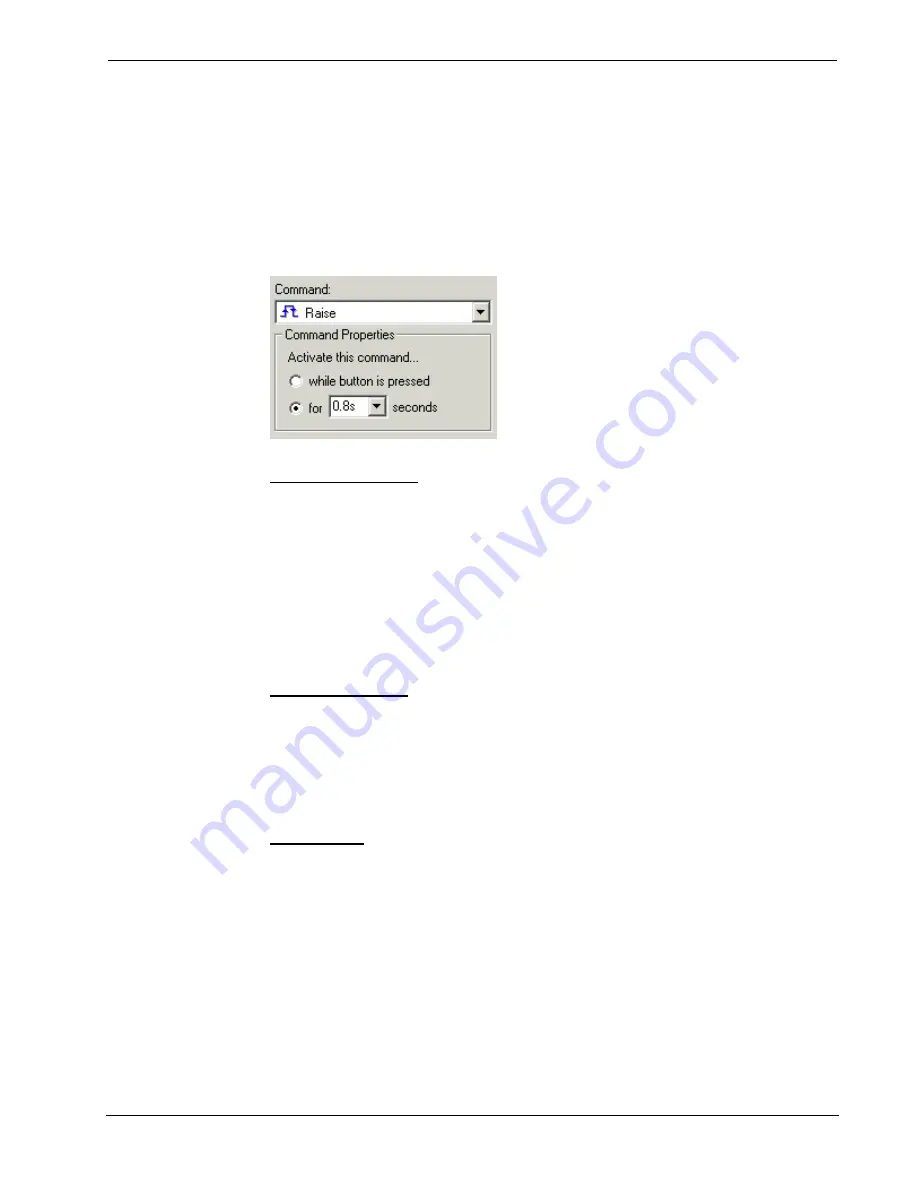
Crestron
D3 Pro
™
Software
button is held down. All other events (e.g. Release, Timeout, etc.) are "momentary"
and are only active for a short time. (The concept of events being active only applies
to digital commands, and has no effect on other command types, such as analog
commands.) By making the default behavior to maintain the command, most devices
will respond as desired with no user intervention.
If a command must be maintained for a set period of time, you can click
Activate
this command for
X
seconds
button and enter the required activation time.
Otherwise it will activate for as long as the button is pressed.
A
NALOG
C
OMMANDS
Devices use analog commands for control where digital commands do not make
sense or are not practical. An analog command has two properties: Target Level and
Fade Time. The target level determines the final value that the analog command
should go to, and the fade time determines how long it should take to get there.
The most common example of an analog command is the Level command on
dimmable lights. Here the Target Level is used to set the light level from its current
value to any value between 0% and 100%, while the Fade Time determines how long
it takes for the light to reach its target value.
S
ERIAL
C
OMMANDS
Although found less often than digital or analog commands, some devices provide
serial commands. A serial command allows a string of characters to be sent directly
to the device. Use of serial commands is a more advanced topic, and you should
consult the help for the particular device that provides the command for more
information.
U
NAFFECTED
Every device in the system contains a special "command" called Unaffected.
Selecting this command indicates that you want no action to be taken on that device
in this event. The unaffected command is only generally used when you want to
synchronize multiple events, but want to omit a particular device from a certain
event. See the section on synchronizing events on page 60.
Reference Guide – DOC. 5998a
Crestron D3 Pro™
•
47
















































